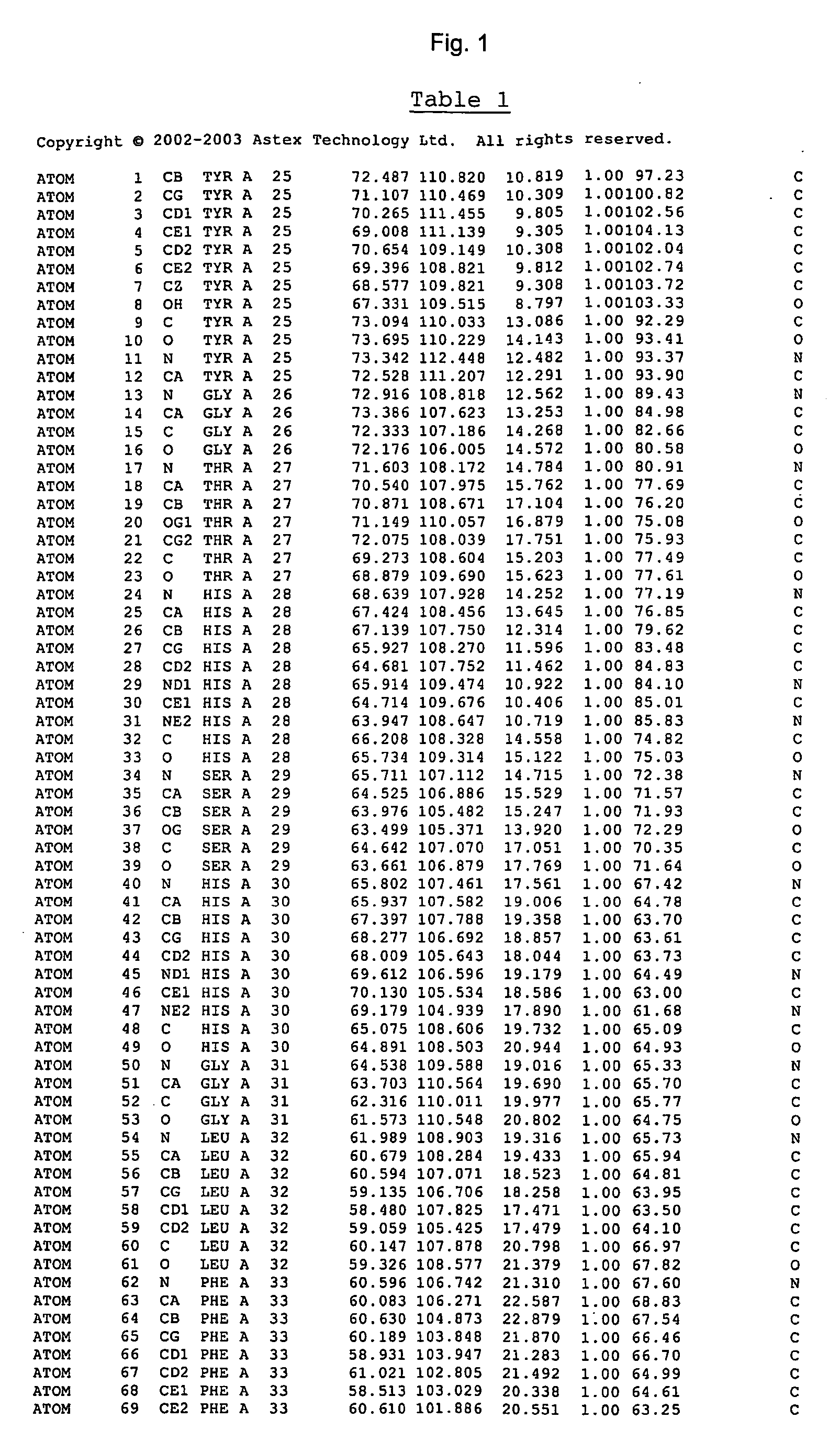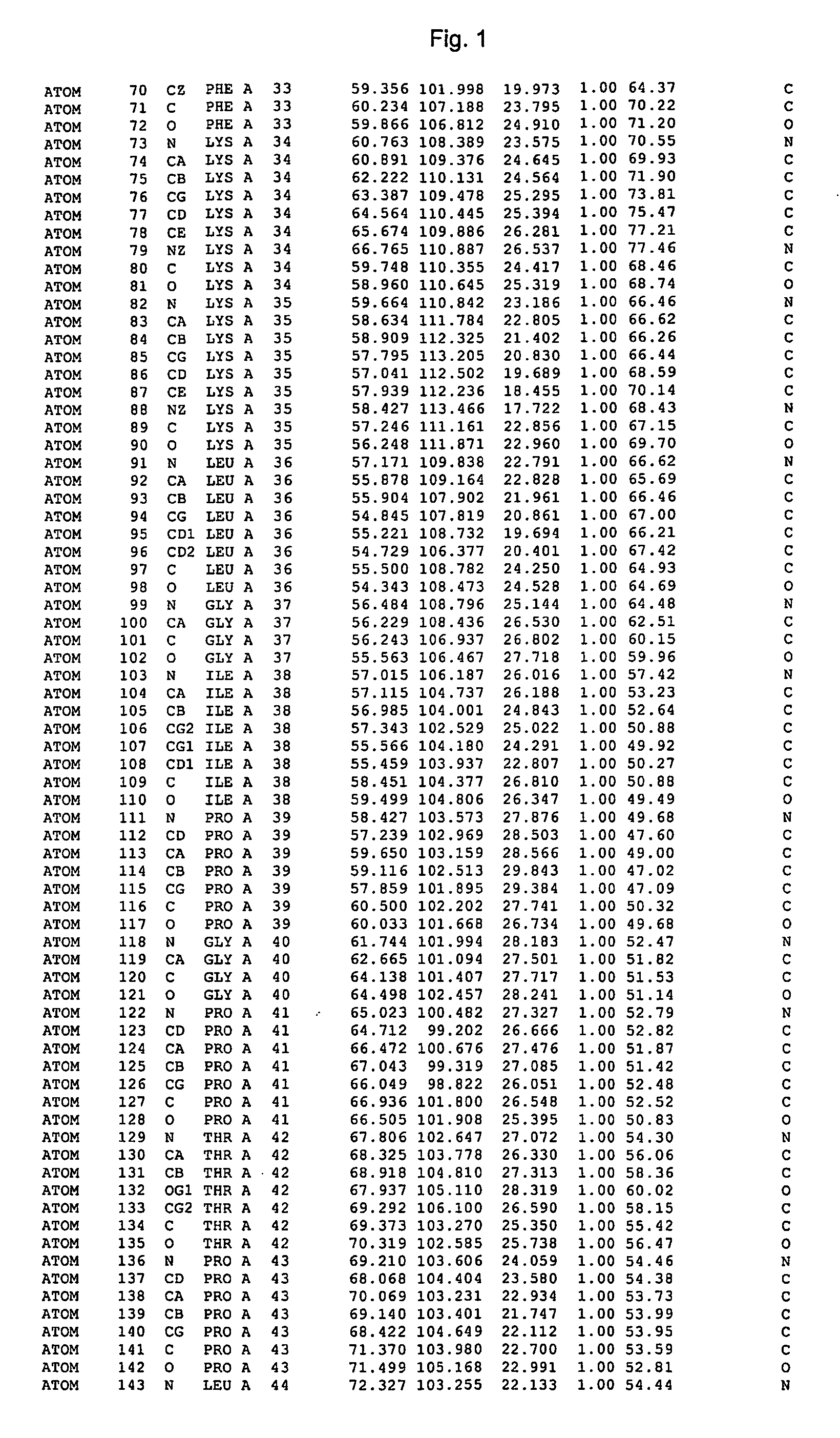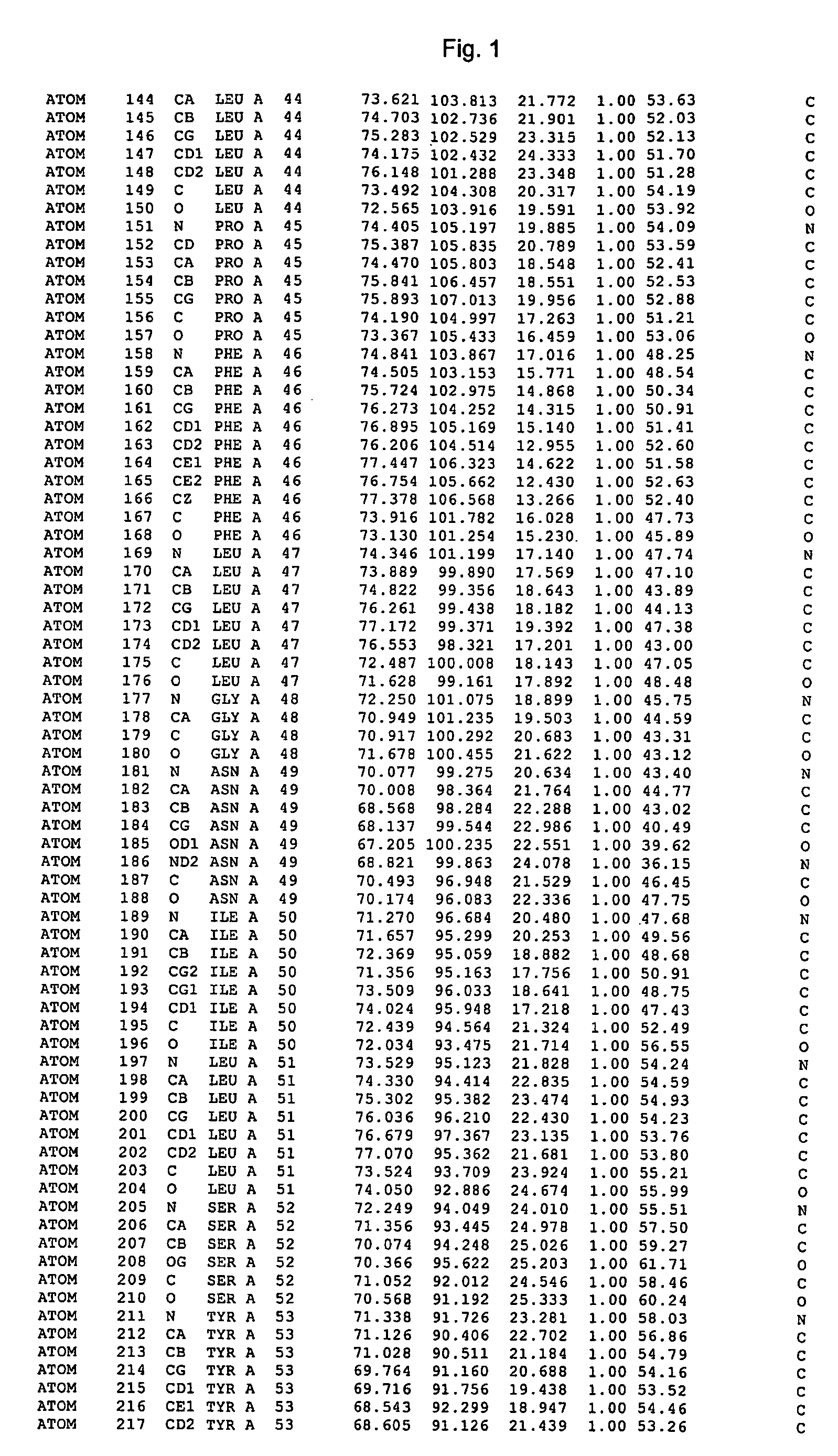Crystal structure of cytochrome P450 3A4 and uses thereof
a technology of cytochrome p450 and crystal structure, which is applied in the field of crystal structure of cytochrome p450 3a4, can solve the problems of chancy and difficult process of crystallising a protein, major obstacle in the process, and inability to achieve clear and objective results
- Summary
- Abstract
- Description
- Claims
- Application Information
AI Technical Summary
Benefits of technology
Problems solved by technology
Method used
Image
Examples
examples
Cloning of 3A4
[0413] 3A4 corresponding to M18907 (GI—181373) was cloned from human liver library (Origene Technologies, Inc.).
[0414] PCR carried out as recommended by the manufacturer:
Liver library 2.0 μl10× PCR buffer (−Mg2+) 2.5 μl10 mM dNTPs 0.5 μl10 mM MgSO4 2.5 μlWater11.0 μlPrimer 1 (@ 10 pmol / μl) 3.0 μlPrimer 2 (@ 10 pmol / μl) 3.0 μl
[0415] Primer 1 is complementary to the 5′ end of the full length 3A4 cDNA. Primer 2 is complementary to the 3′ end of the cDNA and adds a four histidine tag onto the C-terminus of the 3A4 protein.
[0416] Heat to 94° C., add 0.5 μl (1 Unit) Vent polymerase
[0417] 35 cycles as follows:
94° C.30 seconds65° C.60 seconds72° C.60 seconds
[0418] Following the addition of 1 μl (2.5 Units) Taq polymerase and incubation at 72° C. for 10 minutes, 1 μl of product was used in a TOPO cloning reaction (vector pCR4TOPO, Invitrogen). The cloning reaction was used to transform E. coli XL1-blue and positive clones identified by NdeI / SalI restriction digestion o...
PUM
 Login to View More
Login to View More Abstract
Description
Claims
Application Information
 Login to View More
Login to View More - R&D Engineer
- R&D Manager
- IP Professional
- Industry Leading Data Capabilities
- Powerful AI technology
- Patent DNA Extraction
Browse by: Latest US Patents, China's latest patents, Technical Efficacy Thesaurus, Application Domain, Technology Topic, Popular Technical Reports.
© 2024 PatSnap. All rights reserved.Legal|Privacy policy|Modern Slavery Act Transparency Statement|Sitemap|About US| Contact US: help@patsnap.com










